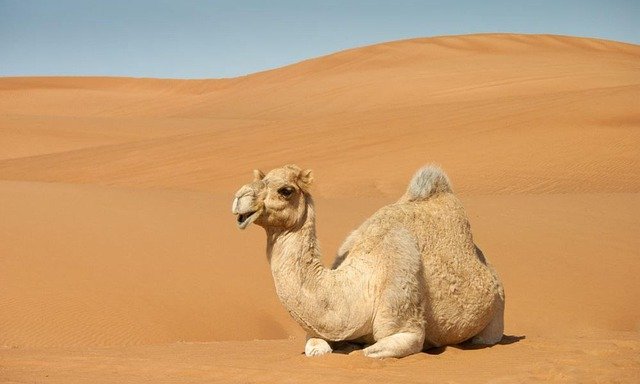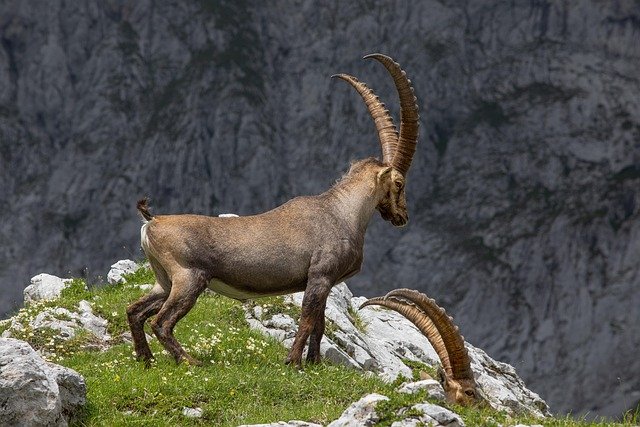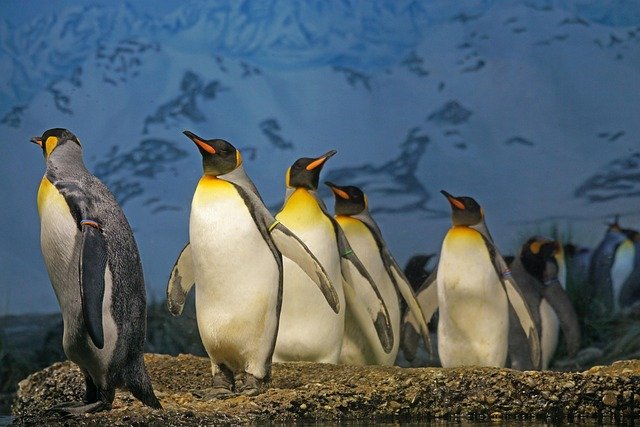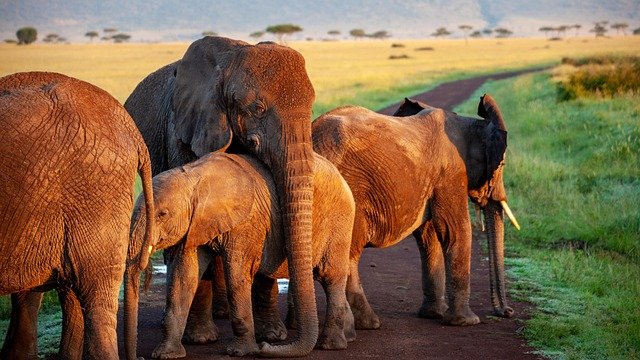Every creature — big or small, wild or tame — has a place where it lives. Some live in deep forests. Others swim in the ocean. Some crawl on hot desert sand, while others swing from jungle trees. But no matter where they are, one thing is always true: they share their space with others.
In nature, animals and plants don’t live alone. They are part of something bigger — a team, a system, a home where every piece matters. This is what we call an ecosystem. And inside every ecosystem is a smaller space called a habitat, which is like each animal or plant’s personal room in the giant house of nature.
In this article, we’ll explore how plants, animals, air, water, and even the soil all work together to survive. We’ll learn how a pond or a tree can be full of life you might not even see, and why even the smallest bug plays an important role.
By the end, you’ll understand not just what an ecosystem is — but why it matters, and how kids like you can help take care of the planet by taking care of these tiny, powerful living worlds.
What Is an Ecosystem, Really?
Imagine your home. You have a bed to sleep in, a kitchen where food is made, a bathroom, and maybe even a backyard. Now think about all the people and pets who live there. Everyone has a role. Someone cooks, someone cleans, someone plays, and someone might feed the dog. All of these jobs and spaces work together to keep your home running smoothly.
Now, take that idea — and place it in nature. That’s what an ecosystem is.
An ecosystem is like nature’s home. It’s a place where plants, animals, insects, air, water, sunlight, and even soil live and work together. Plants make their food with the help of sunlight and minerals, animals feed on plants and other animals feed on plant eating animals. Every part of the system has a job. Every part depends on the others. And when all the parts are working well, the ecosystem stays healthy and balanced.
Big and Small Ecosystems
Ecosystems can be huge, like a rainforest or an ocean. They can also be tiny, like a puddle or a rotting log in the woods. Even a flowerpot can be an ecosystem if it has insects, soil, water, and sunlight. What matters isn’t the size. What matters is that everything inside is connected.
In a forest ecosystem, for example, trees make shade and food. Birds build nests. Insects help break down leaves. Worms help keep the soil soft. Rain falls. Sunlight shines. And everything is working — not in chaos, but in a quiet, smart kind of teamwork.
Living and Non-Living Things Work Together
What’s amazing about ecosystems is that they include living and non-living things. That means a rock, a drop of rain, and a lizard can all be part of the same system.
- Living things (called “biotic”) include animals, plants, fungi, and bacteria.
- Non-living things (called “abiotic”) include sunlight, water, air, and soil.
Even though non-living things don’t breathe or grow, they are just as important. Without sunlight, plants can’t make food. Without water, animals get thirsty. Without air, nothing can live.
What Happens When One Thing Changes?
In an ecosystem, if one piece gets too big, too small, or disappears, everything else feels it. That’s why ecosystems can be delicate. If too many trees are cut down in a forest, the animals that lived in those trees might not find homes or food. If a lake dries up, the fish die, and the birds that ate those fish leave.
So keeping an ecosystem healthy means taking care of every piece, even the small ones.
What Is a Habitat, and Why Does It Matter?

Think about your bedroom. It has your bed, your favorite toys, maybe some books or a nightlight. It’s your special space where you sleep, play, and feel safe. Now imagine if every animal in the world had a space like that — not a room with pillows and blankets, but a space made just for their needs.
That space is called a habitat.
A habitat is the place where a plant or animal lives. It gives everything they need to survive — like food, water, shelter, air, and the right temperature. It’s like a built-in survival kit from nature.
One Ecosystem, Many Habitats
Inside every ecosystem, there are many habitats. Think of a forest. You might see trees, rivers, rocks, and the ground. Each part is a different kind of home for different creatures.
A squirrel might live in the tree branches. A frog might hide under a log near a stream. A beetle might dig tunnels in the dirt. And a hawk might fly high above, using the sky as its hunting ground. They all live in the same forest — the same ecosystem — but they each have very different habitats.
Even in your backyard, you might find ants in the soil, spiders in the corners, bees in the flowers, and birds in the trees. One place, many tiny worlds.
Habitats Are Specially Made for the Creature
Each animal is built for the habitat it lives in.
Polar bears have thick fur and fat to stay warm in freezing cold places. Cactus plants have thick skins and deep roots to live in dry deserts. Frogs have wet skin and love water — so they stay near ponds and swamps.
If you take an animal or plant out of its habitat, it might not survive. That’s why protecting habitats is so important. When their home is safe, the creatures are safe.
When Habitats Are Destroyed
Sadly, some habitats are being hurt. People sometimes cut down forests, pollute oceans, or build roads through wetlands. When that happens, animals can lose their homes and may not find a new one that fits their needs.
But here’s the good news: people — especially kids — can learn, care, and help protect habitats. When we understand how animals and plants live together, we can make choices that keep their homes safe for many years to come.
Different Types of Ecosystems Around the World

The Earth is full of surprises. Hot places, cold places, wet places, dry places. And in every kind of place, plants and animals have found smart ways to live. Each of these places is its own type of ecosystem — and no two are exactly the same.
Let’s explore some of the most amazing ones.
Forests – Green and Full of Life
Forests are some of the busiest ecosystems on Earth. They have tall trees that form a leafy roof called a canopy, and under that roof, there are birds, bugs, snakes, monkeys, flowers, moss, and more.
Some forests, like rainforests, are warm and wet all year long. Others, like temperate forests, have four seasons — spring, summer, fall, and winter. Forests are great because they make a lot of oxygen, soak up carbon dioxide, and give animals homes high up in the branches or deep down in the roots.
Deserts – Dry, Hot, and Still Full of Life
Deserts might look empty, but they’re actually full of life — just life that knows how to survive with very little water.
Cactus plants store water in their thick skin. Camels can walk for days without drinking. Some animals, like lizards and owls, hide during the day and come out at night when it’s cooler. Deserts can be sandy or rocky, but what they all have in common is dryness. Rain is rare, so every drop counts.
Oceans – The Biggest Ecosystem of All
More than half of our planet is covered by oceans. And under the waves is a whole world full of creatures — from tiny plankton to giant whales.
Fish, sea turtles, dolphins, jellyfish, coral reefs, seaweed — the ocean is like a big blue city. Light reaches only the top layers, so some deep-sea creatures glow in the dark! Oceans give us food, help control the climate, and produce much of the oxygen we breathe.
Wetlands – Nature’s Sponges
Wetlands are places that are wet most of the time — like swamps, marshes, and bogs. They might not look fancy, but they do amazing work.
Wetlands clean dirty water, soak up extra rain so places don’t flood, and give homes to frogs, birds, insects, and many special plants. These areas are also great for animals who love both water and land.
Grasslands – Wide Open Spaces
Grasslands are large areas where the main plants are grasses — not trees. They’re usually flat and open, and many large animals call them home. Think of lions, elephants, zebras, and bison.
Grasslands get just enough rain to grow grass but not enough to grow forests. They’re important for food, farming, and feeding huge herds of animals.
How Animals and Plants Help Each Other in Ecosystems

Nature isn’t just a place where animals run around and plants grow. It’s a living, breathing system of cooperation. Even though animals and plants can’t talk to each other with words, they still work together in smart ways. This quiet teamwork is what keeps every ecosystem alive and well.
Let’s look at some of the ways animals and plants help one another.
Plants Give Animals Food and Shelter
Plants are the first step in almost every food chain. That means they are the main source of food for many animals.
Cows eat grass. Rabbits eat leaves. Bees drink nectar from flowers. Even meat-eating animals like lions only survive because their prey eats plants. Without plants, the food chain would fall apart.
But that’s not all. Plants also give animals a place to live. Birds build nests in trees. Squirrels hide nuts under bushes. Frogs sit on lily pads. Trees, shrubs, and flowers are more than pretty — they’re also homes, kitchens, and hiding spots for creatures big and small.
Animals Help Plants Grow and Spread
In return, animals help plants too — especially when it comes to spreading seeds and pollen.
When bees visit flowers to collect sweet nectar, they accidentally carry pollen from one flower to another. This helps the plants make seeds. That’s called pollination, and it’s a big deal. Without it, many fruits and vegetables wouldn’t grow.
Some animals eat fruit and drop the seeds somewhere else. Others carry sticky seeds on their fur as they walk. This helps plants move to new places, where they can grow and spread life even more.
Working Together Keeps Balance
If one group of animals eats too many plants, or if plants grow too thick and block out light, the balance of the ecosystem can shift. But usually, nature keeps everything in harmony.
For example, deer eat grass, but wolves keep the deer from eating too much. Worms break down leaves into rich soil, and plants grow better in that soil. Everything is part of a loop — and when it’s balanced, life keeps going smoothly.
When animals and plants help each other like this, they don’t just survive — they thrive. They grow stronger together than they ever could alone.
How Ecosystems Change Over Time

Nature is always moving, even when it looks still. Plants grow. Animals migrate. Seasons come and go. And sometimes, big changes happen that turn one kind of ecosystem into another. These changes can happen naturally, or because of people.
Let’s look at how and why ecosystems change — and what that means for the plants and animals inside them.
Natural Changes in Ecosystems
Some changes in nature happen on their own. These changes are usually part of a slow and steady rhythm that has been happening for thousands of years.
For example, when a volcano erupts, it can destroy a forest. But over time, tiny plants start to grow in the fresh soil. Then insects arrive. Then birds. Then trees. After many years, the area can become a full forest again. This natural rebuilding is called succession — one ecosystem growing after another.
Other natural changes include:
- Floods and fires that clear old plants and make space for new ones.
- Seasonal shifts, like winter snow or summer rain, which bring different animals and change the land.
- Animal movement, like birds flying south for winter, or whales swimming across oceans to find warmer waters.
These changes help keep ecosystems fresh and full of life.
Human Changes to Ecosystems
While some changes are natural, others are caused by people. And not all of them are good.
When forests are cut down for roads or buildings, or when rivers are blocked or polluted, ecosystems can be hurt. The balance gets broken. Plants might die. Animals might lose their homes. Water and air can become unsafe.
Even things like using too much plastic or wasting water at home can affect ecosystems far away. That’s because everything in nature is connected. A small action in one place can lead to a big change in another.
Can Ecosystems Recover?
The good news is that nature is strong. If we give it time and care, many damaged ecosystems can heal.
For example:
- Wetlands that were dried out can be filled with water again.
- Trees can be planted to rebuild forests.
- Rivers can be cleaned, and animals can return.
Kids, families, and schools can all help by learning how nature works and making small, smart choices to protect it.
Why Ecosystems Need Our Help

Ecosystems are strong, but they’re also delicate. Like a spider’s web, everything inside is connected. If one thread breaks, the rest starts to wobble. And while nature can fix itself over time, it’s getting harder when there are too many problems happening at once.
That’s why ecosystems need us. Not just scientists. Not just grown-ups. But everyone — even kids — can help keep nature safe and balanced.
Problems Ecosystems Face
Today, many ecosystems around the world are under pressure. Forests are being cut down too fast. Oceans are filling up with plastic. Air and water are getting polluted. And many animals are losing their homes.
Some plants and animals are even disappearing forever — this is called extinction. When a species goes extinct, it’s gone for good. And that can hurt the whole system it was part of.
But the biggest danger isn’t just one thing — it’s how fast these changes are happening. Nature needs time to adjust. But human activity is often too quick, leaving no time to recover.
How Helping Ecosystems Helps Us
Protecting ecosystems isn’t just about saving animals or trees. It’s also about saving ourselves.
- Forests clean the air and give us oxygen.
- Oceans help control Earth’s temperature and give us food.
- Wetlands prevent floods and clean water naturally.
- Pollinators like bees help grow fruits and vegetables.
When we protect ecosystems, we are really protecting our own future — our health, our food, our air, and our water.
What Kids Can Do
Even small actions can make a big difference. Here’s how kids can help:
- Learn about nature. The more you know, the more you’ll care.
- Grow plants. Even a small garden or windowsill plant helps.
- Pick up trash. Never leave litter in parks or near water.
- Use less plastic. Reuse bottles and bags.
- Talk to others. Share what you learn with friends and family.
When kids take action, they inspire adults too. One voice can grow into many, and soon, whole communities can change.
How Debsie Helps Kids Explore and Protect Ecosystems

At Debsie, we believe science shouldn’t just live inside books. It should be felt, seen, and explored in real life. And there’s no better way to do that than through learning about ecosystems — the living, breathing worlds right outside your door.
Here’s how Debsie turns this important topic into something kids truly understand and care about.
Learning That Feels Like an Adventure
When kids join a Debsie class, they don’t just sit and listen — they go on a journey. With the help of passionate teachers, kids explore forests, deserts, oceans, and wetlands through stories, videos, activities, and real-life projects.
They learn how bees help flowers, why coral reefs glow, how ants clean up fallen leaves, and how every creature has a job. This hands-on style of learning helps them connect with the material deeply. It’s not just information — it becomes personal understanding.
Teachers Who Make Science Come Alive
Debsie’s partner teachers are not only experts — they’re also warm, fun, and full of passion for the planet. They explain science in simple, clear words, breaking down big ideas like ecosystems and habitats into small, easy-to-grasp lessons.
If a child is curious about why frogs croak or why whales sing, our teachers don’t just give answers — they help the child think, discover, and learn with joy.
Projects That Matter
In Debsie’s lessons, kids often work on mini-projects that show how ecosystems work. They might build a tiny habitat in a shoebox, plant seeds to attract pollinators, or create a food web out of paper and string.
These fun projects help them understand how every part of nature is connected — and how their own choices make a difference.
Turning Curiosity Into Care
Most importantly, Debsie doesn’t just teach facts. It helps kids care. Because when a child understands how nature works, they start to feel responsible for it.
They recycle more, waste less, ask better questions, and grow up thinking not just about themselves — but about the world around them.
Final Thoughts: A World of Life, One Ecosystem at a Time
Every corner of the Earth — from the deepest ocean to the tiniest puddle — is alive with connection. Plants grow, animals move, air flows, and water nourishes. Everything has a job. Everything matters. And together, all these living parts form the magical systems we call ecosystems.
When you understand ecosystems, you start to see the world differently. You notice how a bee buzzing near a flower is doing more than collecting nectar — it’s keeping a garden alive. You see how a tree is more than just wood — it’s a home, a shade, a part of the air we breathe. Even a patch of grass becomes something special.
And when you learn how animals and plants live together, you also learn how you fit into the picture. You’re not just an observer — you’re part of nature’s team.
At Debsie, we help kids become more than students. We help them become explorers, protectors, and thoughtful humans who see wonder in every leaf, bug, and breeze. Because science isn’t just something to memorize — it’s a way to understand life itself.
🌍 Ready to help your child explore ecosystems and grow a love for nature and learning?
🌱 Sign up for a free class today at https://debsie.com/courses and start a journey where every lesson helps build a brighter, kinder, smarter world.
Read next:
